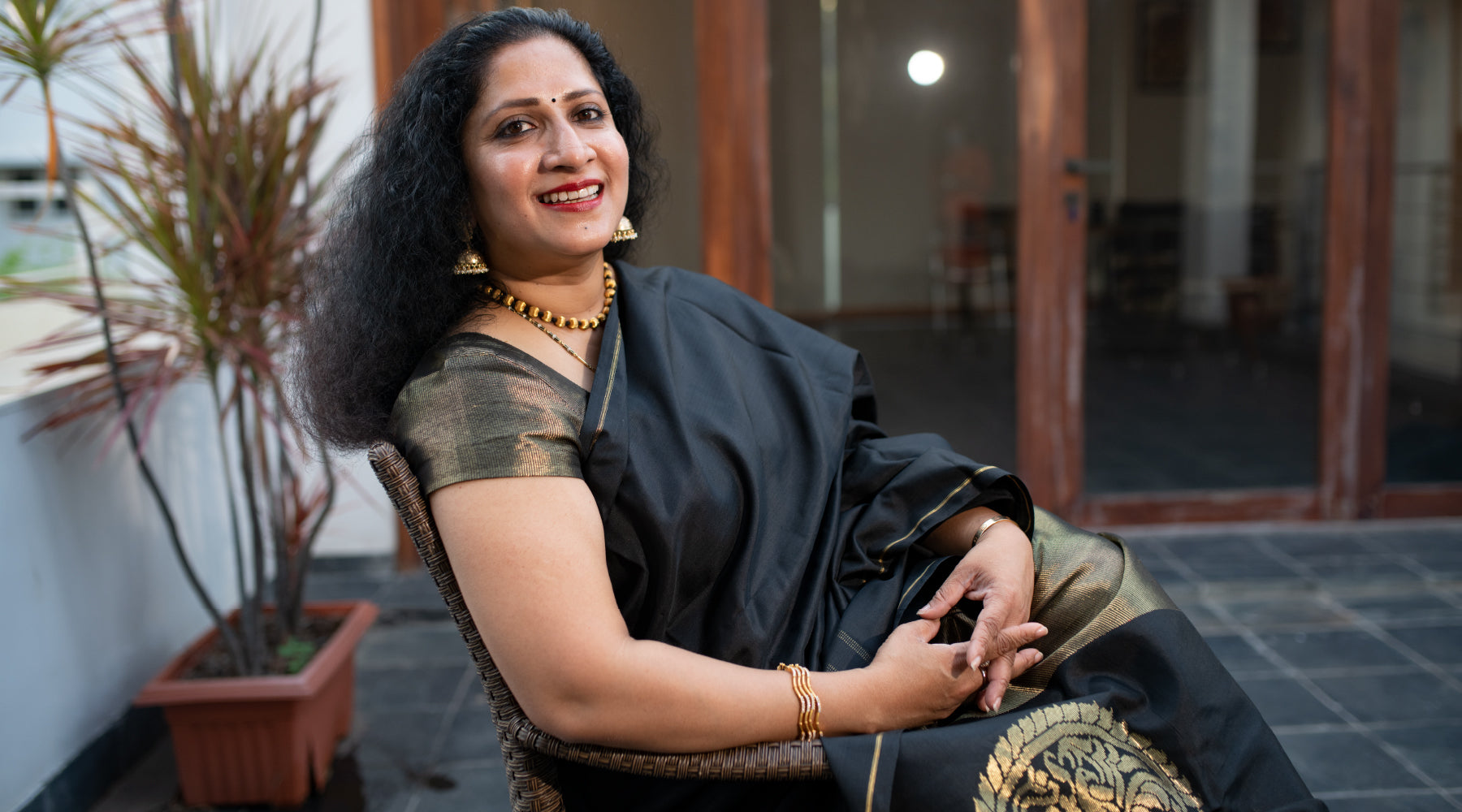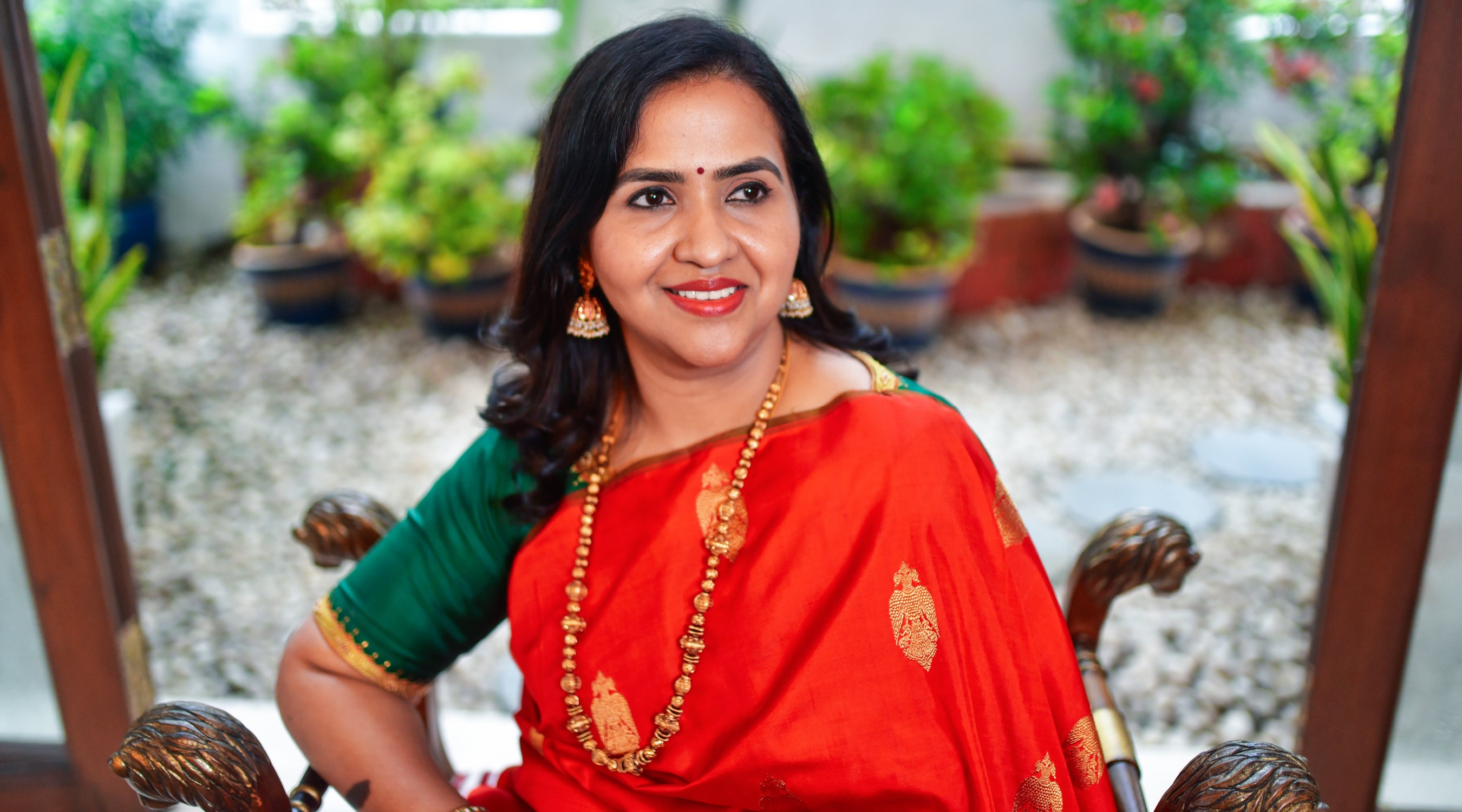KANAKAVALLI VIGNETTES : Pankaja Srinivasan - Heads & Tales

Pankaja Srinivasan, Kanakavalli’s December Vignette, has been a journalist for over 30 years, writing about a diverse range of subjects, from books and movies, to food and the environment. In the course of an exciting career, she has worked with some of India’s finest women journalists who inspired her on a path of integrity, curiosity and determination. In this delightful, free-wheeling conversation with Aneesha Bangera for The Kanakavalli Journal, Pankaja regales us with stories of her childhood in Calcutta, her adventures around the country with her Air Force husband, and the most unforgettable moments of her life as a journalist—all with the warmth and wit of a great storyteller. Reflecting on the changes over the years that she has observed in her profession and within herself, Pankaja talks about her growing interest in stories of sustainability, the slow food movement, and the amazing people and initiatives hidden in the city of Coimbatore, where she now lives. Pausing to browse the Kanakavalli repertoire, Pankaja curates a selection of kanjivarams that celebrate her love for the craft. Excerpts from the conversation below…
Heads & Tales
Calcutta: A Love Story
I was born in 1961 in Calcutta, and spent my most impressionable years in the city, my favourite place in the world. Calcutta holds precious memories of school days and a time of innocence and joy. Life was stress-free, and as children we’d rush home from school to play outside until our somewhat arbitrary curfew of 6.45 pm when the street lights came on. I am still in touch with most of my friends from those early years, and we’ve now known each other for over fifty years. 
Above (top to bottom): A school performance of Julius Caesar in which Pankaja played Brutus; Pankaja playing Ernest in Oscar Wilde's The Importance of Being Earnest while at school in Calcutta
I vividly remember how, during Puja every year when my dad got his bonus, he’d take out one crisp ten rupee note, and give it to me as pocket money. We’d then get into a cab to go to New Market and I would agonise over all the wealth I had come into, and what to do with it. I’d usually blow up my princely sum on one Enid Blyton book, a brooch to pin on to my handkerchief and a bottle of Cutex nail paint which was all the rage in those days.
Reading was the only entertainment in a childhood without television. My earliest memory of books is when I had measles as a child, and my parents would read the Noddy series to me as I lay in bed. Books went on to become a very important part of my life—both my parents were readers, who talked about books and encouraged me to read without any restrictions. Swami and Friends remains one of my favourites. It’s a book my mother received as a gift and she would sleep with it under her pillow for as long as she could remember. My love of classics came from my dad who introduced me to The Three Musketeers, The Man in The Iron Mask, and the great Westerns.

Above: Pankaja's mother introduced her to R.K. Narayan's Swami and Friends, and the book remains a favourite till today.
One of the highlights of our years in Calcutta were the Book Fairs—where you’d find people arguing heatedly about Marx or selling old vinyl records, amid a sea of books. Calcutta really is a love story I’ll take with me to the grave. I continue to return to the city every year for a reunion with my friends from school.

Above: Pankaja with her school friends in Calcutta, 50 years after they graduated.
A Journey to Remember
I wish I could say that I’d always had the fire in my belly to become a journalist, but the fact is, it was an accident of sorts. While doing a part-time French diploma in Bombay after college, a friend mentioned that Star & Style was looking for interns, so off I went. AT Jayanthi became my first boss, and I had great fun getting up close and personal with Bollywood.
I went on to join Sunday Magazine of Indian Express where I worked with the amazing Kalpana Sharma. When the magazine moved to Delhi, I moved too, to work with Nandini Mehta, another incredible and inspiring editor.
After I got married, I had children and travelled around the country with my husband. One of the highlights of this time was living in Ladakh from 1993 to 1995, an otherworldly experience. My daughter was six months old and my son was four, and we lived in a tiny one-bedroom structure with a veranda that was our kitchen. We had no running water, so would have to break off chunks of ice from a drum outside the house and heat them on a kerosene stove.

Above: Pankaja and her family with the ITBP at Chushul in Leh, on Independence Day in 1994.
Despite how crazy it sounds, Air Force life was great fun, with parties planned at the drop of a hat. I still remember how ice cream was flown in from Chandigarh one New Year’s Eve, and in the -26-degree-cold we all valiantly tried to eat it just because it was the thing to do.
I would like to believe that these experiences have informed me of who I am and the work I do—they broadened my perspectives, taught me to be more tolerant and accepting of different ways of thinking and enriched my writing.
On my return to Delhi I started working with India Today’s TV Today magazine—my first foray back to work after eight years of nappy-changing and sterilising bottles! There I worked with the fabulous and funny Shailaja Bajpai who taught me not to take myself too seriously. My writing reflects this—no matter how grim the subject, I try to find a silver lining.
My family eventually moved to Coimbatore, where I started working with The Hindu and the rest, as they say, is history. The advantage of being in Coimbatore, a tier 2 city, was that while there wasn’t much happening in terms of glamorous art shows or soirees, I had to think about local stories. In the process of writing about the city, I met wonderful human beings and came across fantastic initiatives—things that might have escaped my notice in a bigger city. I wrote about health, food, movies, books, and took a shine to writing about the environment.
I learnt in the course of my writing and meeting environmentalists, how to break down the problems and see how each of us can make a difference in our own sphere. People are doing things that are doable, but we often don’t know about them, so unearthing these stories was gratifying. This led me to the theme of eating local and the slow food movement. The pace of life in Coimbatore allowed me to discover these connections, with the time to mull over things.
Talking Heads & Discovered Tales
There are several stories and interviews I’ll never forget. One was a conversation between Tarla Dalal and Mallika Badrinath, that I had the good fortune to listen in on for a column in The Hindu. Tarla’s was the first recipe book I ever owned, and I was in complete awe of her, while Mallika is a force to reckon with in the field of food writing. The conversation, in a mix of English, Hindi and Tamil, was at once hilarious and informative, and I’ll never forget Tarla grilling Mallika on how to make the perfect idli.
Another memorable interview was one featuring Yoganathan, a bus conductor in Coimbatore who is an environmentalist. For me it represents the idea that it is ordinary people with extraordinary hearts and minds who make the most meaningful changes.

Above: Pankaja with authors Chitra Banerjee Divakaruni and Perumal Murugan, during her time working at The Hindu.
I also love finding truly local and sometimes surprising stories. In the midst of the squalor of the Coonoor Bus Stand, in the Nilgiris, sits the Crown Bakery. Speaking to the owner, I discovered that his great-grandfather set up the bakery, from where biscuits would be shipped to England once upon a time.

Above: Crown Bakery, a gem in the midst of Coonoor Bus Stand with a fascinating history.
Shifting Sands
With the internet, the world of journalism has changed. People in high places are more accessible, for one. It has also become more important than ever to cross check facts, because stories now live forever online, rather than becoming yesterday’s news. My own experiences have also influenced the way I approach the stories as I write now. Reading, holding conversations and having friends who are passionate about the planet and food, have made me a lot more mindful when I write about food. I ask questions about local and seasonal ingredients, I probe a little further to look at food beyond mere taste or presentation.
Saris are my other enduring love and my profession has unfolded a treasure trove of stories about the wealth of saris in our country. Some are inspiring, some sad, but all of them fascinating. I remember a conversation with the weavers of Negamam, where I was taken aback when one of them said he was going to make sure he was the last of his family to weave. He spoke of the toll that the profession takes on the body and the vicious cycle of debt. These stories really struck a chord with me. I realise we put so much onus on our weaving communities—speaking of the legacy they carry. And yet this legacy is often a burden to them because so little is being done to sustain their livelihoods.
This has changed the way I experience and write about textiles in general and the sari in particular. I am far more sensitive to and conscious of the issues at play—I try to dig deeper, ask more questions, and the answers are often startling. It is also reflected in the way I now choose to shop for saris and in the saris I choose to wear. I exasperate my sister and my daughter every time we shop together for saris as I launch into a lecture about this!

Above (left to right): Pankaja and her friends all dressed up in the traditional Nauvari sari in Pune; Posing with her best friend of 50 years.
Saris and Stories
Growing up in Calcutta, we were expected to wear saris in the eleventh and twelfth grades, and I have always been very comfortable in them. I remember my first kanjivaram—a gorgeous blue with a mustard border that my aunt gave me for her sister’s wedding.
From Ahalya in Kanakavalli, I learnt about the traditional motifs the kanjivaram weaver uses. I love that I know the names of motifs like the annapakshi or rudraksha. When I drape myself in a sari, I feel as though I’m wrapping a story around me, and suddenly it has so much more value. When my daughter was studying in England, she went to an exhibit of Indian textiles at the Victoria and Albert Museum. She called me from there, saying they had exhibited textiles that she had seen hanging in my cupboard, from Kanjivarams and Benarasis to Bomkais and Venkatagiris. I think it is amazing that we still have the privilege to wear living history, and drape ourselves in our ancient traditions.

On Tradition and Beauty
For me, tradition is beautiful as far as it doesn’t impinge upon another person’s sensitivities and sensibilities. It is something one must do with full awareness of what it signifies, rather than mechanically going through the motions. Traditions evolve from people who have enjoyed doing something for a number of years—whether it is eating laddoos during Diwali or dressing a certain way for a wedding. As long as it’s pleasant for everybody, I think traditions are lovely.
Having read all that I have, been in the company of some amazing human beings, and been exposed to a great deal of feminist literature, I’d hate to have to define beauty—the minute I define it, I restrict it and contain it. What is beautiful to me may not be so to another person.
On the Vignettes kanjivaram
I love the colour black, and I received this gorgeous kanjivaram as a gift from my husband’s aunt for my son’s wedding. I’m not one for too much heavy zari, so the striking simplicity of this sari appeals to me.

Pankaja is wearing a black Kanakavalli kanjivaram with fine bands and dotted stripes in off white and teal blue on the body. A band of gold zari adorns the borders, while the pallu features geometric bands and stripes in rich zari.
- Pankaja Srinivasan, in conversation with Aneesha Bangera, photography by Raghuram Vedant.
View Pankaja's accompanying guest curation here.



